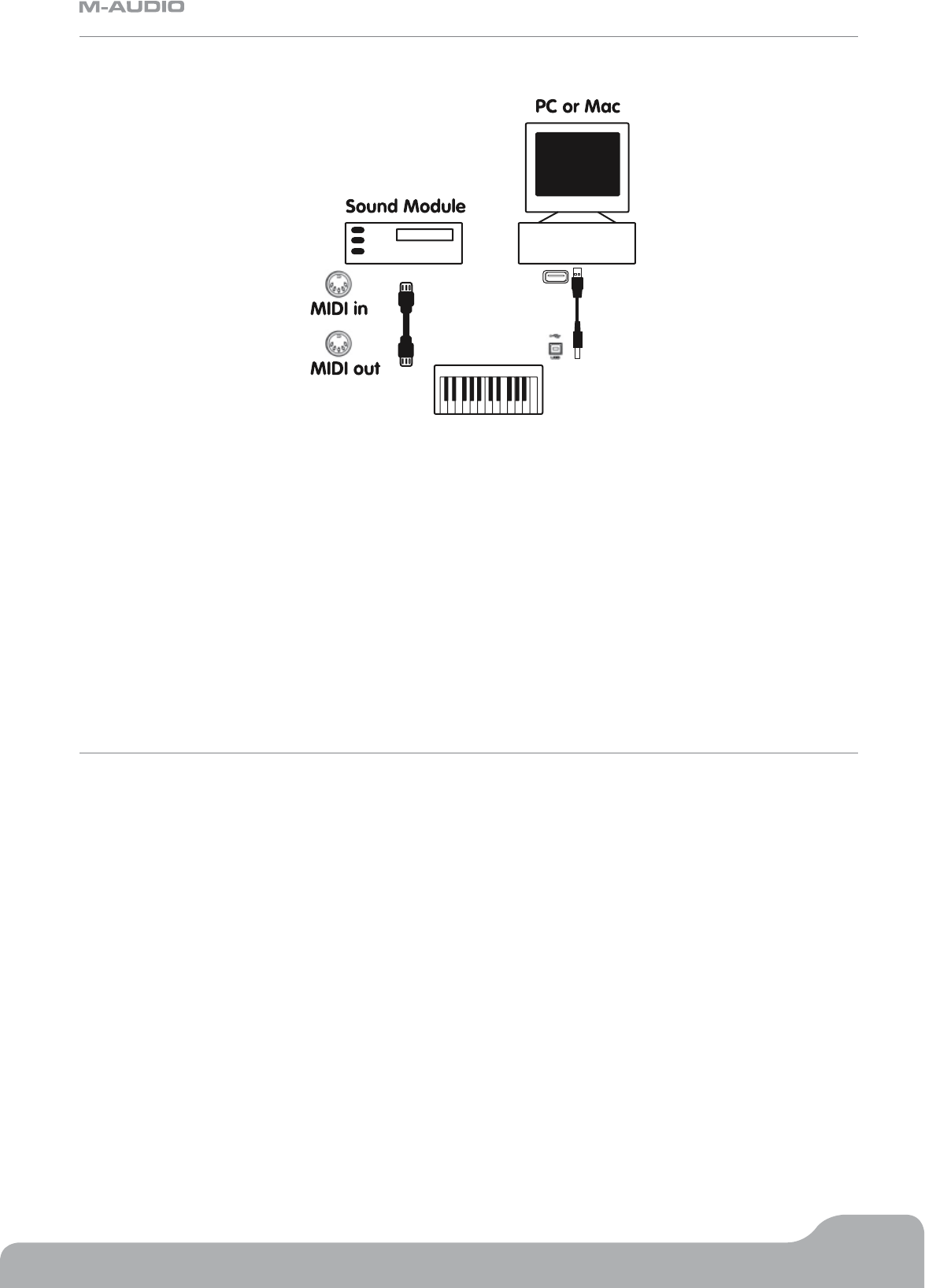
Axiom Line User Guide
34
English
4.3 Controlling a Sound Module from the Computer
By turning on MIDI Out from USB mode (section 4.1), the data coming into the Axiom from the computer will go directly out of the
MIDI Out port and trigger the sounds in the external sound module. This means that your Axiom is effectively acting as a USB to
MIDI interface. In order to channel MIDI data from the computer to the MIDI Out port, you should set the MIDI Output device on
your computer to be the Axiom.
Alternatively, you may want to merge the MIDI data from your Axiom with the data from the computer. This would allow you to play
and record to a sequencer, and play back the entire performance on a sound module connected to the MIDI Out port of your Axiom.
To do this:
< Set MIDI Out from USB mode on (section 4.1).
< Select the Axiom as the MIDI Input device in your sequencer.
< Select the Axiom as the MIDI Output device in your sequencer.
Section 5: MIDI Messages Explained
5.1 Program & Bank Changes Explained
The original GM MIDI Specification was designed to access only 128 different sounds using Program Change messages (0-127).
As MIDI devices grew to be more sophisticated and contain more sounds, Bank Change messages were included in the specification
to allow for more than 128 sounds to be accessed. Within each bank there are a possible 128 different sound patches that can be
accessed using the standard Program Change command. Using the expanded 14-bit Bank Change command, there are now 16,384
banks available—each with 128 sounds patches. Technically speaking, the first 7 bits of the 14-bit Bank Change message are sent in a
single byte known as the Bank LSB. The last 7 bits define another byte known as the Bank MSB. The Bank LSB is the most commonly
used. This allows for 128 bank changes, and often there is no need to send a Bank MSB.
You will find almost all MIDI devices respond to Program Change commands and many are organized according to the GM listing. In
all General MIDI devices, the different sounds are always organized in the same way from device to device, so the piano sounds are in
their particular place, the string sounds are in their place, the drum sounds and so on. All GM devices (both hardware and software
sound modules) are clearly labeled as such, so you know that their sounds are organized in the General MIDI structure. So when a GM
device receives a MIDI Program Change, it calls up a type of sound that you expect from the GM sound set. All non-GM devices call
up unique sounds from their memory upon receiving MIDI Program Changes. Since the sounds in a non-GM device are not arranged
in a particular order, you need to take a look at the device itself to see which sound you want and at which location in the memory it
resides. Many VST instruments such as Native Instruments’ FM7 or the synth modules in Reason are non-GM devices.
Bank Change messages are useful when calling up sounds from a large library that may exist in a particular sound module or software
synth. For example devices that are built with Roland's GS specification or Yamaha's XG specification require you to specify a Bank
Change in order to access the extra voices and effects that these devices provide.
Sending Program, Bank LSB and Bank MSB data is made simple using the Axiom. Please consult section 2.3 to see how this is done.


















